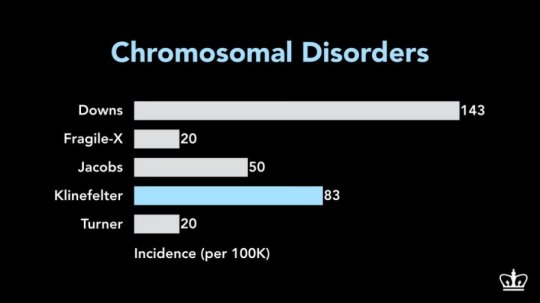
Klinefelter syndrome is the most common disorder of the male sex chromosomes, yet is rarely diagnosed in children. A new assessment tool is being developed by researchers at Columbia University Medical Center (CUMC) to help pediatricians detect the physical traits of the syndrome. The tool could pave the way for early interventions that prevent and treat a range of physical, psychological, social, and cognitive impairments. The study was published in The Journal of Pediatrics.
According to lead author Sharron Close, PhD, boys with Klinefelter syndrome are an under-studied and vulnerable population owing to late diagnosis, stigma, and misunderstanding about the nature of sex chromosome disorders. “The physical features of the disorder are not well known, making it difficult for pediatricians to diagnose,” said Dr. Close, who conducted this study while a doctoral student at Columbia University School of Nursing. Dr. Close is currently an assistant professor of Nursing at Emory University.
The other authors of the paper include Dr. Arlene Smaldone, PhD, associate professor at the Columbia School of Nursing, Nancy Reame, PhD, the Mary Dickey Lindsay Professor of Disease Prevention and Health Promotion in the Faculty of Nursing at CUMC, and Ilene Fennoy, MD, professor of Pediatrics at CUMC.
“The development of the Klinefelter Physical Phenotype Index (KSPHI) made it possible for this study to be the first to link the physical traits of Klinefelter syndrome with psychosocial function in children,” says study co-author Dr. Fennoy. “This new assessment tool will help primary care providers identify those who are at greatest risk for neuro-developmental problems.”
Although Klinefelter syndrome affects approximately one in 600 males, only 10% of cases are diagnosed during childhood. The KSPHI, which is still under development, will make it easier for pediatricians to diagnose the syndrome. The KSPHI measures 13 physical traits, including tall stature, wide arm span, large waist circumference, small testes, breast tissue development, and skeletal abnormalities.
Study participants underwent physical exams and hormone analysis, and completed four questionnaires that assessed their quality of life, self-esteem, self-concept, and risk for depression. The KSPHI was used to detect the cumulative number of common physical traits in 43 males between the ages of 8 and 18 years. A subset of participants was drawn from CUMC’s adolescent endocrinology clinic, which is a leading diagnostic center for Klinefelter Syndrome.
Boys with a higher number of the physical traits associated with Klinefelter syndrome reported worse quality of life than those with fewer physical manifestations of the disorder. About two-thirds of the participants with Klinefelter syndrome indicated they had a poor quality of life, while 38% had low self-esteem, 26% had a poor self-concept, and 16% were at risk for depression. Most participants reported learning disabilities, speech and language deficits, and social problems.
Surprisingly, testosterone levels were not associated with these psychological and social health measures, even though low testosterone has been widely believed to underlie many of these symptoms. “Based on this finding, it is not clear that the testosterone therapy commonly given during puberty will remedy many of the problems that children with Klinefelter syndrome experience,” says Dr. Fennoy.
Whether hormonal therapy plays a role during development or not, the researchers emphasize that early intervention to address psychosocial health risks will help patients and their families manage some of the chronic aspects of Klinefelter syndrome.
Klinefelter syndrome is caused by an extra X chromosome and is one of the most common genetic causes of male infertility. It is often diagnosed when adults seek help for reproductive problems. Although infertility is the most frequent outcome of the disorder, affected individuals are also at high risk for cardiovascular disease, diabetes, osteoporosis, autoimmune disorders, and cancer.
Story Source:
The above post is reprinted from materials provided by Columbia University Medical Center. Note: Materials may be edited for content and length.
Journal Reference:
- Sharron Close, Ilene Fennoy, Arlene Smaldone, Nancy Reame.Phenotype and Adverse Quality of Life in Boys with Klinefelter Syndrome. The Journal of Pediatrics, 2015; 167 (3): 650 DOI: 10.1016/j.jpeds.2015.06.037
